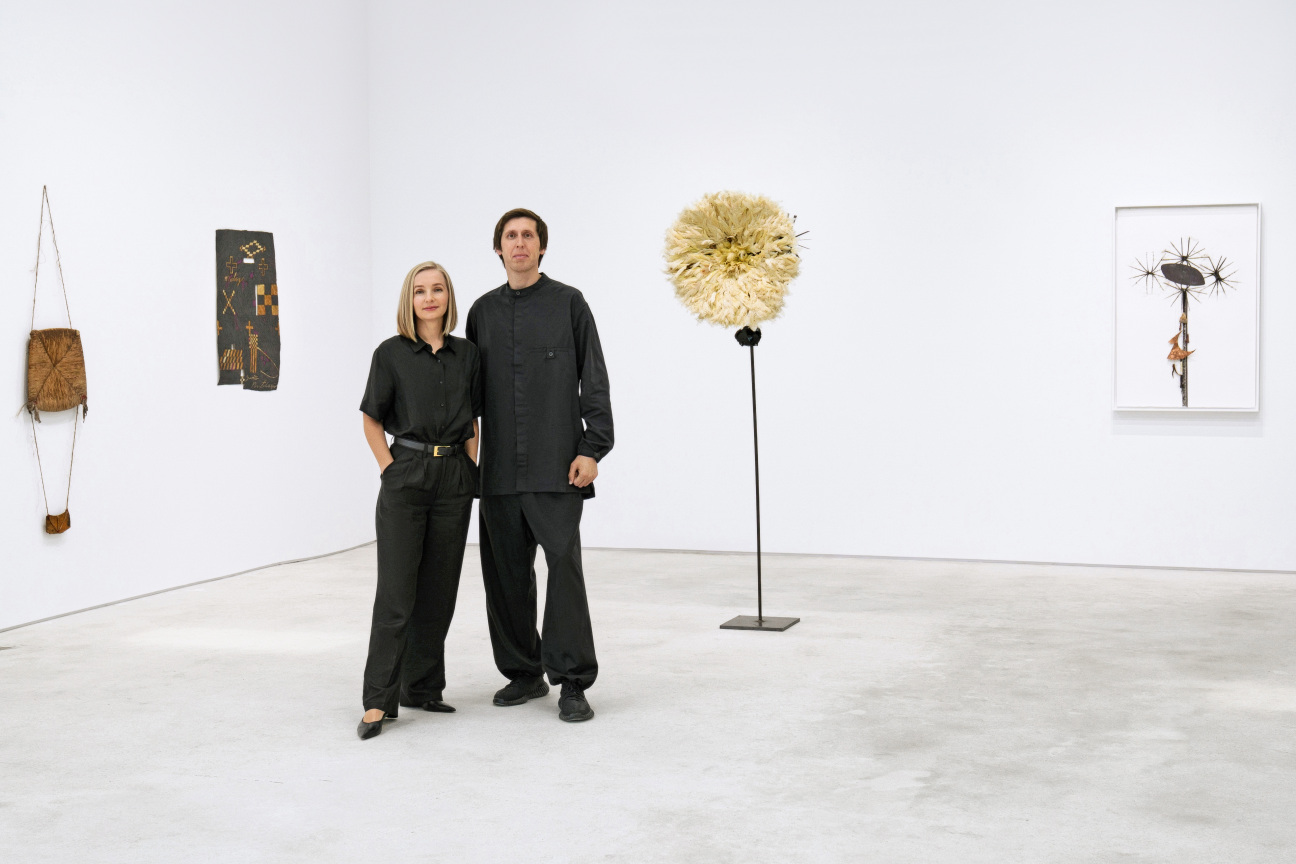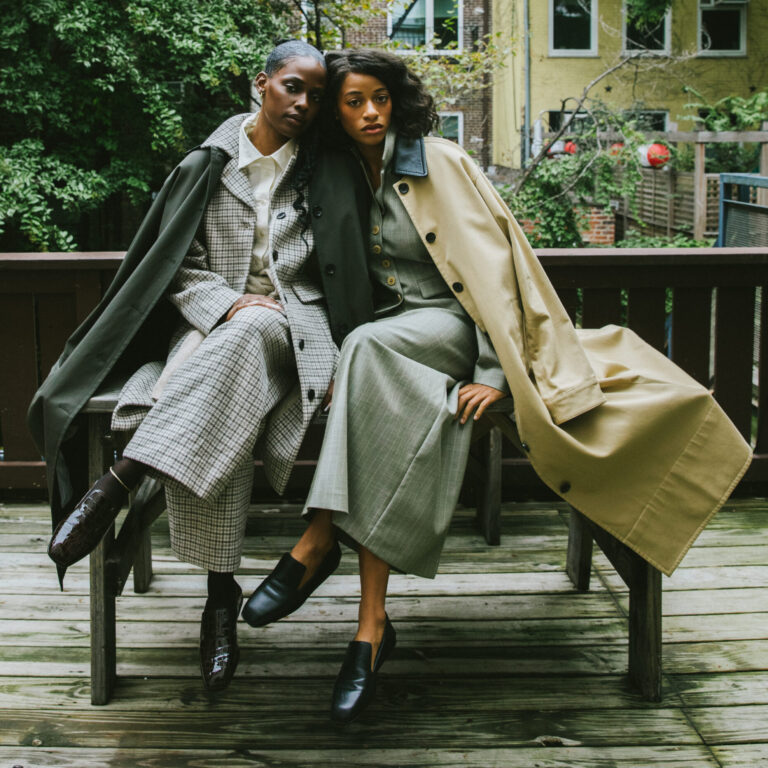
If not for Miami Art Week, Julia and Max Voloshyn, the founders of the city’s buzziest new art gallery, would be in a war zone a world away.
The couple—who founded Kyiv’s Voloshyn Gallery in 2016—came to Miami three years ago with their now-4-year-old daughter to exhibit at NADA and Untitled Art. The family ended up catching Covid and postponing their return home, which led to their opening a prescient pop-up exhibition, “The Memory on Her Face,” featuring Ukrainian artists responding to the 2014 Russian invasion of Donbas. They never went home.
By February 2022, Russia had launched yet another brutal invasion of their homeland, and the Voloshyns became full-time Miami residents. “We still maintain our programming in Kyiv,” says Max. Doing so is a Herculean feat that involves balancing safety precautions and limited resources to manage exhibitions remotely with their team back home. When Russia first attacked Ukraine, the couple closed their space for over a year—converting it into a bomb shelter that housed artists and gallery employees during the harsh winter months.

“The U.S., as a country built by immigrants, has a deep and interconnected history with Ukrainians,” Julia says. “In our time here, we have met so many individuals whose grandparents or great-grandparents were Ukrainian. Now, [they] feel a renewed connection to the culture and share in the country’s ongoing tragedy.”
Today, Voloshyn’s Allapattah outpost features a program of Ukrainian and Eastern European artists, calling attention not just to the attempted erasure of the Ukrainian way of life, but also the plundering of their cultural identity. “Ukrainian artists received a significant wave of attention when the full-scale invasion began,” says Julia, noting that it has waned over time. “The crisis in Ukraine is far from resolved, and Ukrainian artists continue to create works that reflect their lived experiences, the trauma of war, and the resilience of people.”

Keeping the flame of attention alive has become the gallery’s objective—one it’s furthered on the art fair circuit, from the Armory Show and Liste Art Fair Basel to Felix Art Fair, Arco Madrid, and Independent. “Russia’s attempts to appropriate, erase, and rewrite the cultural narrative of Ukraine are well-documented,” Julia asserts. “This cultural theft has left Ukrainian artists facing a dual struggle—not only to survive and create amidst the ongoing conflict, but also to ensure their history and contributions are accurately represented.” The gallery isn’t “just about art,” she adds—it’s a space of resistance and cultural preservation. Ukrainian artists “need a steady platform for their voices.”
This month, Voloshyn will present “The Radial Bone,” a solo exhibition of painting, graphics, and sculptural installations by artist Nikita Kadan, who will be traveling from Ukraine to Miami for the occasion. “This is more than an art exhibition,” echoes Max. “It’s a dialogue about cultural violence, and how artists respond to the violence that permeates their world."










 in your life?
in your life?

